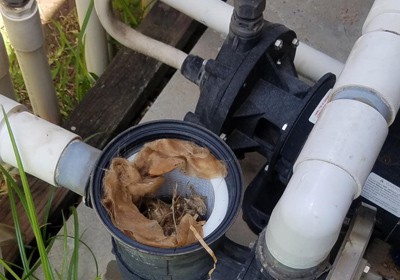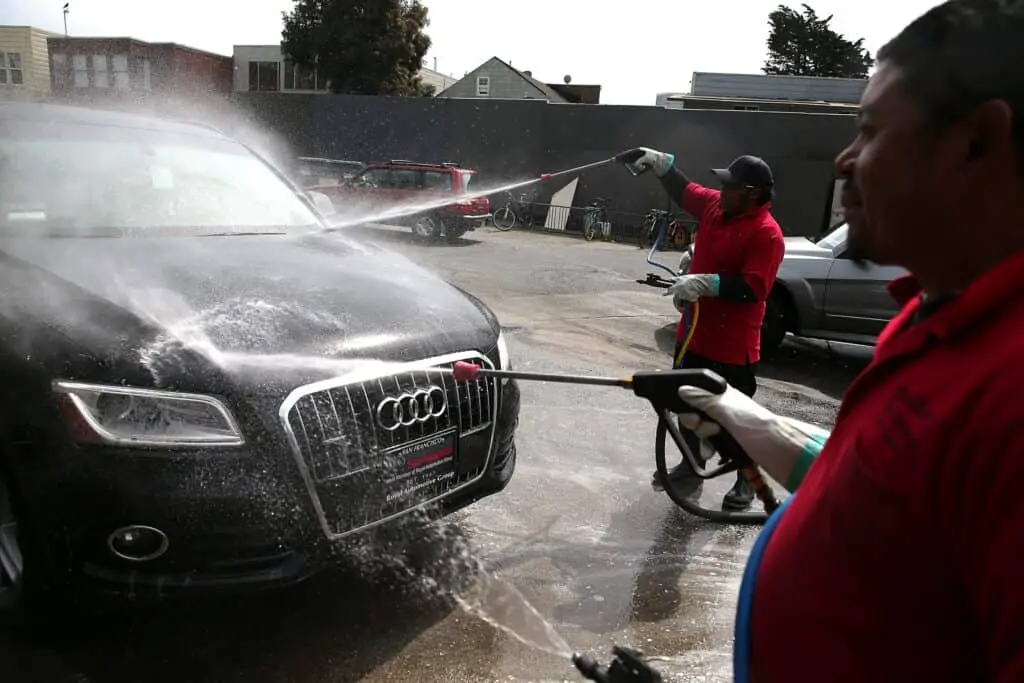Using a surface cleaner with your pressure washer can make cleaning large areas easier. This tool helps achieve a uniform clean without streaks.
Pressure washing can be a daunting task. It often requires time and effort, especially when cleaning wide surfaces. A surface cleaner attachment can simplify this chore. It works by distributing the pressure evenly, reducing the risk of damage and ensuring a consistent clean.
Whether you need to clean driveways, patios, or decks, understanding how to use this tool can save you both time and energy. This guide will walk you through the steps, making the process straightforward and efficient. By the end, you’ll see how this tool can enhance your cleaning routine. Ready to get started? Let’s dive in!
Introduction To Surface Cleaners
Are you tired of struggling with traditional cleaning methods? Surface cleaners for pressure washers can make your life easier. They are designed to clean large, flat surfaces quickly and effectively. This guide will introduce you to surface cleaners and their benefits. Let’s dive in!
What Is A Surface Cleaner?
A surface cleaner is an attachment for pressure washers. It has a rotating bar with high-pressure nozzles. These nozzles spray water evenly across the surface. This creates a consistent and powerful cleaning action.
Surface cleaners are ideal for driveways, patios, and decks. They can clean large areas in less time. They also reduce streaks and uneven cleaning.
Benefits Of Using Surface Cleaners
Efficiency: Surface cleaners cover more area than a standard nozzle. This saves you time and effort.
Uniform Cleaning: The rotating nozzles ensure even water distribution. This provides a consistent clean without streaks.
Reduced Splash Back: The enclosed design minimizes water splash. This keeps you and your surroundings dry.
Protects Surfaces: Surface cleaners are gentle on surfaces. They reduce the risk of damage compared to a direct pressure washer nozzle.
| Feature | Benefit |
|---|---|
| Rotating Nozzles | Even and powerful cleaning |
| Enclosed Design | Minimizes splash back |
| Wide Coverage | Faster cleaning of large areas |
| Gentle Cleaning | Protects surfaces from damage |
By using a surface cleaner, you can make your cleaning tasks easier and more efficient. Whether it’s your driveway, patio, or deck, a surface cleaner can handle it.
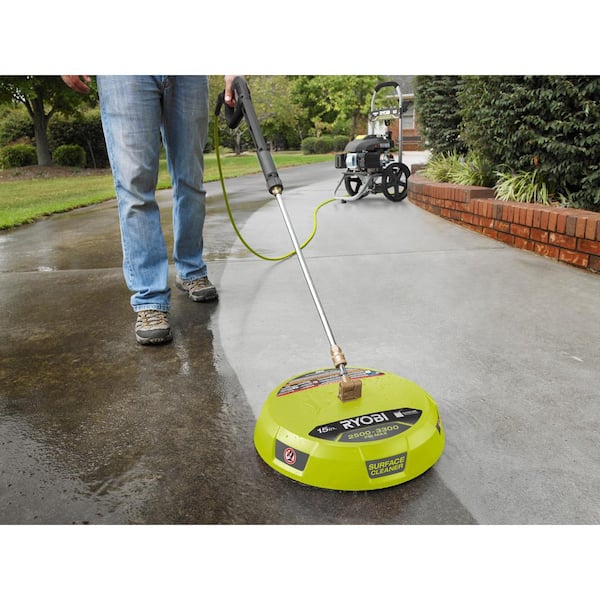
Credit: www.homedepot.com
Types Of Surface Cleaners
Surface cleaners are special attachments for pressure washers. They help clean large, flat areas. They save time and effort. There are two main types of surface cleaners. Each type has its own benefits and uses.
Rotary Surface Cleaners
Rotary surface cleaners have spinning nozzles. The nozzles spray water in a circular motion. This makes them perfect for cleaning driveways, patios, and decks. They work fast and leave no streaks. Rotary surface cleaners are easy to use. Just attach them to your pressure washer. Then guide them over the surface you want to clean.
Flat Surface Cleaners
Flat surface cleaners have a fixed spray bar. The spray bar has multiple nozzles. These nozzles spray water evenly across the surface. Flat surface cleaners are great for cleaning large areas. They are also useful for cleaning walls and fences. Flat surface cleaners often come with wheels. This makes them easy to maneuver. Attach the flat surface cleaner to your pressure washer. Move it slowly over the surface for a thorough clean.
Choosing The Right Surface Cleaner
Choosing the right surface cleaner for your pressure washer is essential. It ensures effective and efficient cleaning. Not all surface cleaners are created equal. So, it’s important to select one that suits your needs. This guide will help you make an informed decision.
Assessing Your Cleaning Needs
First, consider what you need to clean. Different surfaces require different cleaners. Concrete, wood, and tile need specific types. If you plan to clean large areas, a wider cleaner head will save time. For small or intricate surfaces, a smaller head works better. Think about the surface material and the extent of dirt or grime. This helps in choosing the right tool.
Compatibility With Pressure Washers
Next, check if the surface cleaner is compatible with your pressure washer. Not all cleaners work with every pressure washer. Look at the pressure rating of your washer. Make sure the surface cleaner can handle that pressure. Most surface cleaners list their compatible pressure ranges. Match these with your pressure washer’s specifications. This ensures efficient and safe cleaning.
Always check the connection types. Some surface cleaners might need adapters. Ensure you have the right attachments. Proper compatibility ensures a smooth and hassle-free cleaning experience.
Setting Up Your Surface Cleaner
Setting up your surface cleaner for a pressure washer can seem tough. But with some simple steps, you can do it easily. This guide will help you connect your surface cleaner, follow safety precautions, and get started.
Connecting To The Pressure Washer
First, gather all necessary equipment. You will need your pressure washer, surface cleaner, and proper attachments.
- Turn off the pressure washer and disconnect it from the power source.
- Attach the surface cleaner to the pressure washer’s spray wand. Ensure it fits snugly.
- Connect the high-pressure hose to the pressure washer and the surface cleaner.
- Check for tight connections to avoid leaks.
Now, your surface cleaner is connected and ready for use.
Safety Precautions
Safety is crucial when using a surface cleaner. Follow these precautions:
- Wear protective gear: gloves, goggles, and sturdy shoes.
- Check the area: Remove debris and obstacles.
- Inspect equipment: Look for damage or wear on hoses and attachments.
- Read the manual: Follow the manufacturer’s guidelines.
Following these steps helps ensure a safe and effective cleaning experience.
Operating The Surface Cleaner
Using a surface cleaner with your pressure washer can make cleaning large areas much easier. It helps you clean faster and more evenly. But to get the best results, you need to know how to operate it correctly.
Optimal Pressure Settings
Set your pressure washer to the right pressure. Too high can damage surfaces. Too low won’t clean effectively. Aim for a setting between 2000 and 3000 PSI. This range usually works well for most surfaces. Always check the surface cleaner’s manual for specific recommendations.
Techniques For Effective Cleaning
Start by moving the surface cleaner in a steady, sweeping motion. Do not rush; move at a consistent pace. Overlapping each pass ensures no spots are missed. Clean one section at a time. This helps you keep track of your progress.
Hold the surface cleaner close to the ground. Keeping it level improves cleaning efficiency. If you notice streaks, slow down your pace. This allows the cleaner to work more effectively.
Always keep an eye out for debris. Small stones or sticks can get caught. They might damage the surface cleaner or the surface itself. Clear the area before you start.
Maintaining Your Surface Cleaner
Maintaining your surface cleaner for your pressure washer ensures optimal performance and longevity. Regular upkeep can prevent issues and keep the equipment running smoothly. In this section, we will cover essential maintenance practices.
Regular Cleaning And Inspection
After each use, rinse the surface cleaner with water. This removes any debris or dirt. Inspect the nozzles and spray bars for clogs. Clear any blockages with a thin wire or brush. Check the bristles or wheels for wear and tear. Replace worn parts to maintain efficiency. Regularly check the hoses for leaks or cracks. Replace damaged hoses immediately.
Troubleshooting Common Issues
If your surface cleaner is not spinning, check the water pressure. Low pressure can cause this problem. Ensure the water source is fully open. Examine the nozzles for clogs. Clean or replace them if necessary. If there is streaking on the surface, inspect the spray bars. They should be clean and aligned properly. Adjust them if needed. Unusual vibrations can indicate loose parts. Tighten any loose screws or bolts. If your cleaner is not moving smoothly, check the wheels or bristles. Replace them if they are worn out.
Tips For Efficient Use
Using a surface cleaner with your pressure washer can save time and effort. To get the best results, follow these tips for efficient use. This section will cover time-saving strategies and how to avoid common mistakes.
Time-saving Strategies
Start by clearing the area of debris. This prevents blockages and allows smooth cleaning. Use a sweeping motion while operating the surface cleaner. This ensures even coverage and avoids missing spots.
Overlap each pass slightly. This helps in achieving a thorough clean. Keep the nozzle at a consistent height from the surface. This maintains even pressure and avoids streaks.
Choose the right nozzle size. A larger nozzle covers more area, reducing cleaning time. Check the manufacturer’s guide for recommended nozzle sizes.
Avoiding Common Mistakes
Avoid using high pressure on delicate surfaces. It can cause damage. Test a small area first to ensure the surface can handle the pressure.
Never use hot water unless specified by the manufacturer. Hot water can damage certain surface cleaners. Always follow the instructions provided with your surface cleaner.
Do not rush the cleaning process. Moving too fast can result in missed spots and uneven cleaning. Take your time to ensure a thorough job.
Regularly inspect and clean your surface cleaner. This helps in maintaining its efficiency and longevity. Remove any debris or blockages from the nozzles.
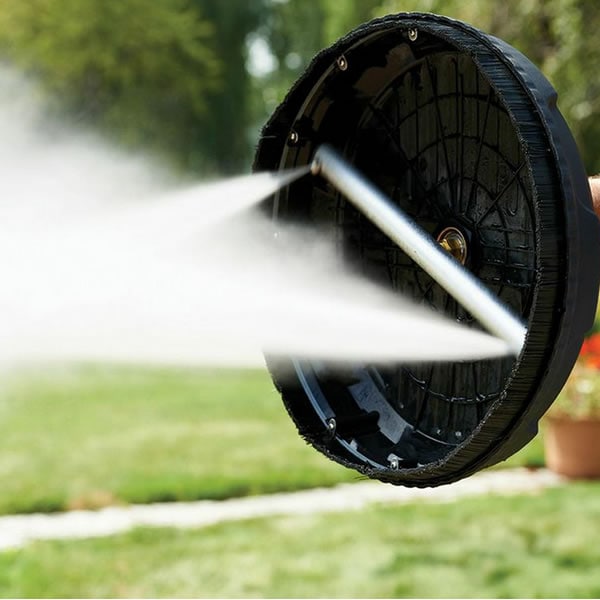
Credit: www.pressurewashersdirect.com
Applications For Surface Cleaners
Surface cleaners for pressure washers are easy to use. Attach the cleaner to the pressure washer wand. Move it slowly over the surface for a thorough clean.
Surface cleaners for pressure washers are versatile and efficient. They make cleaning large areas a breeze. These tools are designed to clean a variety of surfaces quickly. They can be used in both residential and commercial settings. Below, we explore their different applications.Residential Uses
Using a surface cleaner at home can save you time. Clean driveways, patios, and sidewalks with ease. These tools remove dirt, grime, and stains effectively. They work well on concrete, wood decks, and even pavers. For pool areas, surface cleaners are a great choice. They help keep the area safe and clean. Avoid slippery surfaces by removing algae and mold. Even your garage floor can benefit from a surface cleaner. It removes oil stains and dust efficiently.Commercial And Industrial Uses
In commercial settings, surface cleaners are invaluable. They clean parking lots, sidewalks, and building exteriors. Businesses can maintain a clean and professional appearance. Surface cleaners also work well in warehouses. They help keep large floor areas free from dust and debris. Industrial sites benefit from surface cleaners too. They handle tough stains and grime on concrete floors. Factories and workshops can maintain cleanliness easily. This helps in creating a safer working environment. “`Environmental Considerations
Using a surface cleaner for your pressure washer can make cleaning large areas much easier and more efficient. But, it’s important to consider the environmental impact. Proper practices help ensure that cleaning is effective and safe for the planet.
Eco-friendly Cleaning Solutions
Choosing eco-friendly cleaning solutions is crucial. These solutions are biodegradable and non-toxic. They minimize harm to plants, animals, and water sources. Here are some options:
- Biodegradable detergents
- Non-toxic cleaners
- Plant-based solutions
Always read the labels. Look for products labeled as “environmentally safe” or “eco-friendly.”
Safe Disposal Of Wastewater
Proper disposal of wastewater is essential. It prevents pollution of local water bodies. Follow these steps for safe disposal:
- Collect wastewater using a containment system.
- Filter out solids and debris.
- Neutralize harmful chemicals if needed.
- Dispose of the filtered water in accordance with local regulations.
Never allow wastewater to drain into storm sewers or natural water bodies. This can cause significant environmental damage.
| Action | Benefit |
|---|---|
| Use eco-friendly detergents | Protects wildlife and plants |
| Collect wastewater | Prevents contamination of water bodies |
| Filter and neutralize wastewater | Reduces chemical pollution |
By following these guidelines, you can clean effectively while protecting the environment. Always be mindful of the impact your cleaning activities have on the surroundings.
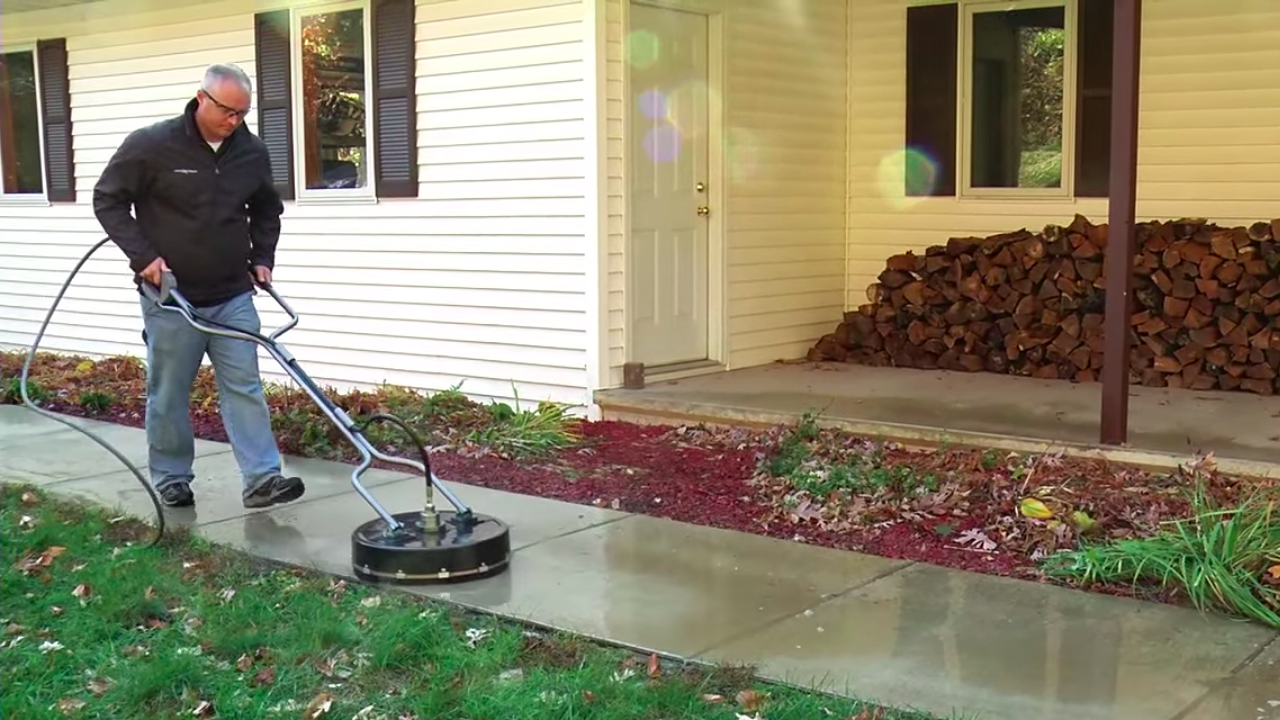
Credit: www.mitm.com
Frequently Asked Questions
What Is A Surface Cleaner For A Pressure Washer?
A surface cleaner is an attachment for a pressure washer. It helps clean large flat surfaces efficiently. It is ideal for driveways, patios, and decks.
How Does A Surface Cleaner Work?
A surface cleaner uses rotating nozzles for uniform cleaning. It distributes the water pressure evenly. This ensures consistent and streak-free results.
Can I Use Any Surface Cleaner With My Pressure Washer?
Ensure compatibility between the surface cleaner and your pressure washer. Check the PSI and GPM ratings. Proper matching ensures optimal performance and safety.
What Surfaces Can I Clean With A Surface Cleaner?
Surface cleaners are perfect for flat surfaces like driveways, patios, and sidewalks. They are also great for decks and garage floors.
Conclusion
Using a surface cleaner with a pressure washer is easy. Follow the steps outlined in this guide. Your surfaces will look clean and fresh. Save time and energy by using the right tools. Safety is important, so always wear protective gear.
Practice makes perfect, so don’t worry if it’s not perfect the first time. Enjoy a cleaner home environment with less effort. Try these tips today and see the difference. Happy cleaning!
